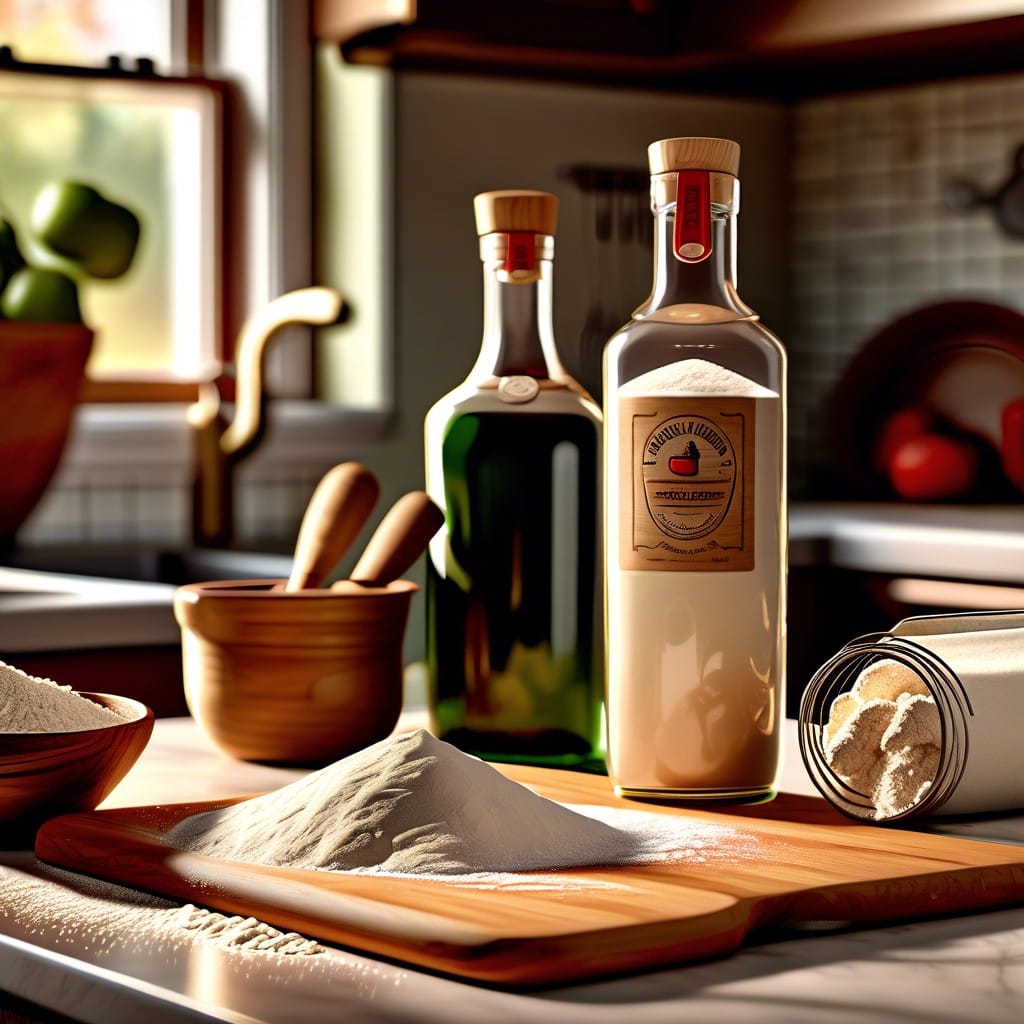Last updated on
While chalk paint is water-based and can be cleaned off surfaces when fresh, once dry, it usually requires removal methods like sanding or using a special chalk paint remover.
Key takeaways:
- Chalk paint is not waterproof and can be damaged by water.
- Chalk paint is highly susceptible to water when it is not yet dry.
- Without a sealant, chalk paint can be compromised by water over time.
- Applying a sealer can enhance the water resistance of chalk paint.
- Proper maintenance can help protect chalk-painted surfaces from water damage.
Chalk Paint Water-Resistance Overview
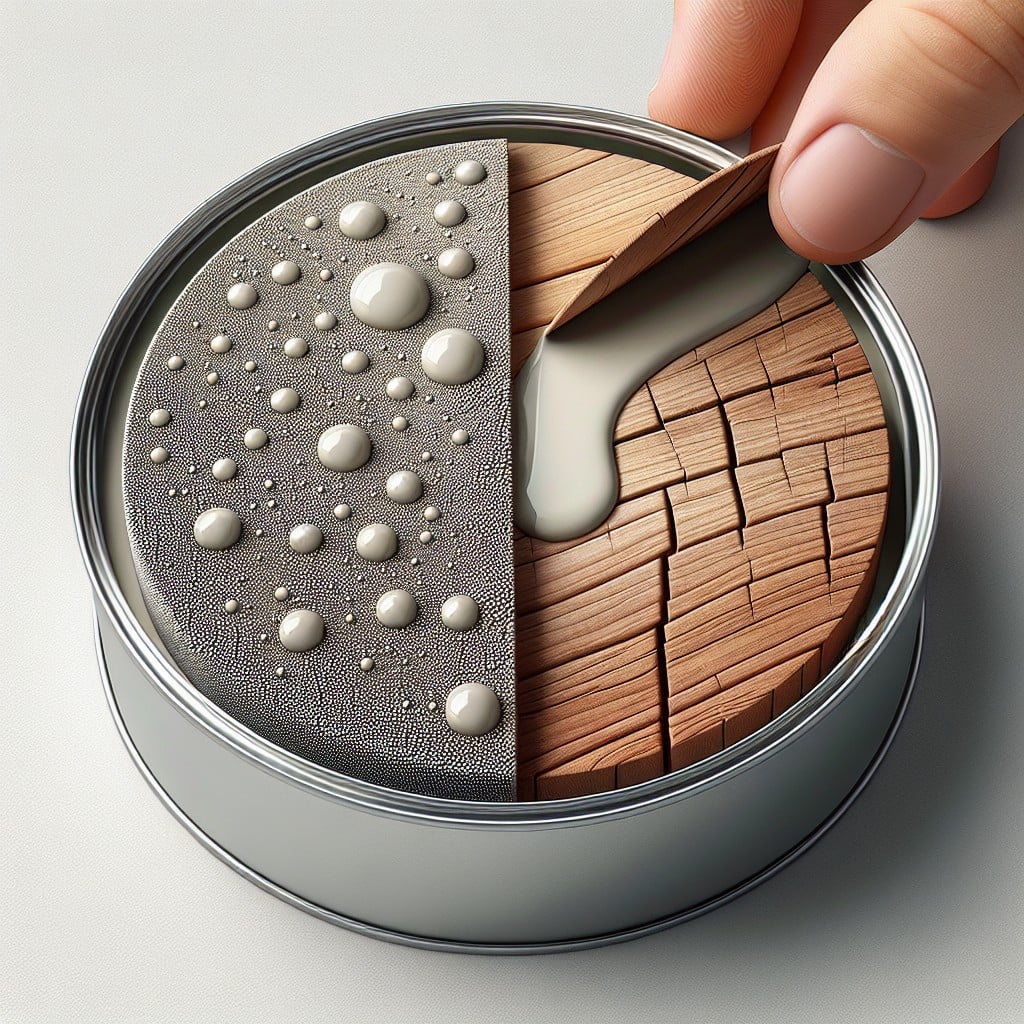
Understanding the water-resistance of chalk paint is crucial when determining its suitability for your project. Unsealed chalk paint has a matte finish that’s highly porous, meaning that it can absorb water and potentially be damaged if exposed to moisture. However, once cured, it does have a modest level of resistance to light dampness. It’s important to note that significant contact with water can cause the paint to break down over time, leading to a need for touch-ups or a new coat of paint.
For projects that require a higher degree of water resistance such as kitchen cabinets, bathroom furniture, or outdoor items, applying a sealer after the paint has dried completely is key. Sealants, like wax or a water-based polyurethane, create a protective barrier that repels moisture and protects the finish from water-related wear and tear. The choice of sealant can influence the final sheen and durability of the painted surface.
In summary, while chalk paint in its raw form is not waterproof, with the proper finishing it can withstand daily exposure to moisture, making it a versatile option for a variety of decorative and functional home projects.
Effects of Water On Freshly Applied Chalk Paint
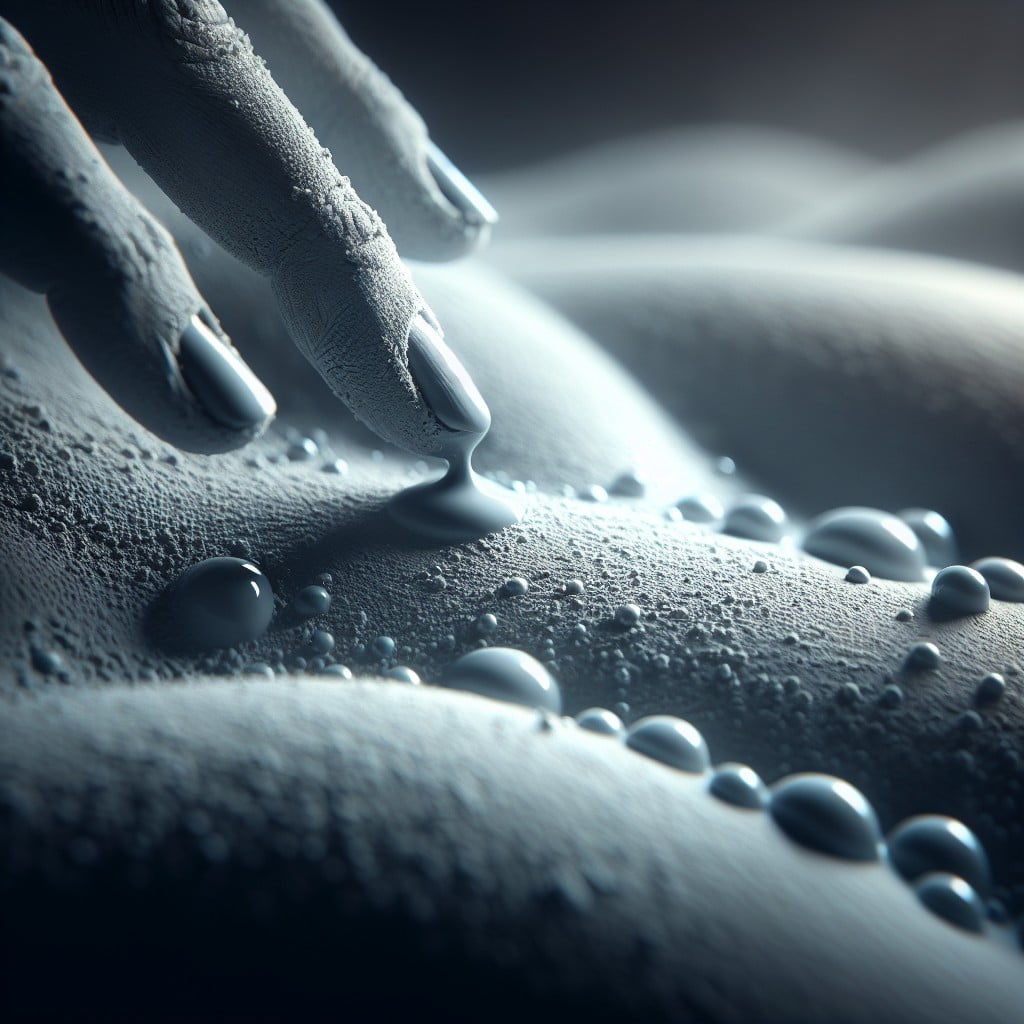
When chalk paint has not yet cured, its susceptibility to water is particularly high. Here are some key points that illustrate what happens when water interacts with chalk paint that hasn’t fully dried:
- Water can easily dilute uncured chalk paint, leading to a lighter color and reduced coverage.
- The integrity of the paint film is compromised, causing smudging, streaks, or even wash-off if sufficiently soaked.
- Contact with water before chalk paint cures may result in an uneven finish that could necessitate a new coat to achieve a uniform appearance.
- Interaction with water can prolong the drying time, as the moisture must evaporate before the paint can properly set.
To avoid these issues, it’s crucial to allow chalk paint to dry completely, ideally in a moisture-free environment, before exposing it to any water.
Long-Term Durability of Chalk Paint in Contact With Water
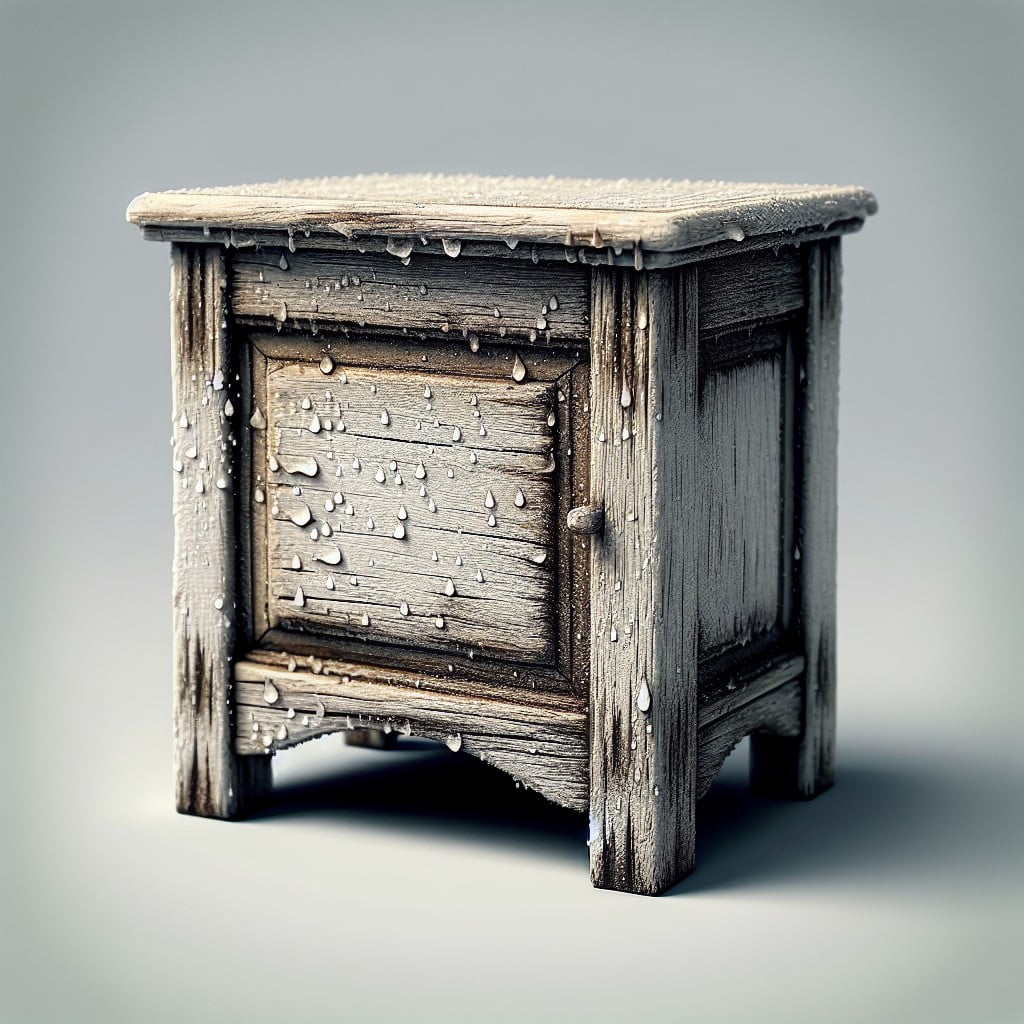
Chalk paint, known for its matte finish and versatile application, isn’t inherently water-resistant. Over time, if frequently exposed to moisture or spills, the paint may start to break down, leading to chipping or a weakened finish. Here’s what impacts the durability of chalk paint when it meets water:
- Porous Nature: Without a sealant, its porous nature allows water to permeate, causing the paint to lift or become streaky.
- Sealants’ Role: A wax or polyurethane sealant can significantly enhance its water resistance, acting as a barrier.
- Wear and Tear: Regular use and cleaning can erode the sealant over time, necessitating a fresh coat to maintain protection against water.
- Environmental Factors: High humidity or damp conditions can also accelerate the degradation process of chalk paint.
- Surface Preparation: Prior to painting, thorough surface preparation can increase adhesion and, subsequently, water resistance upon drying.
In summary, while chalk paint itself won’t fend off water indefinitely, with the correct finish and care, its longevity even in the face of moisture can be substantially extended.
Sealing Chalk Paint for Enhanced Water Resistance
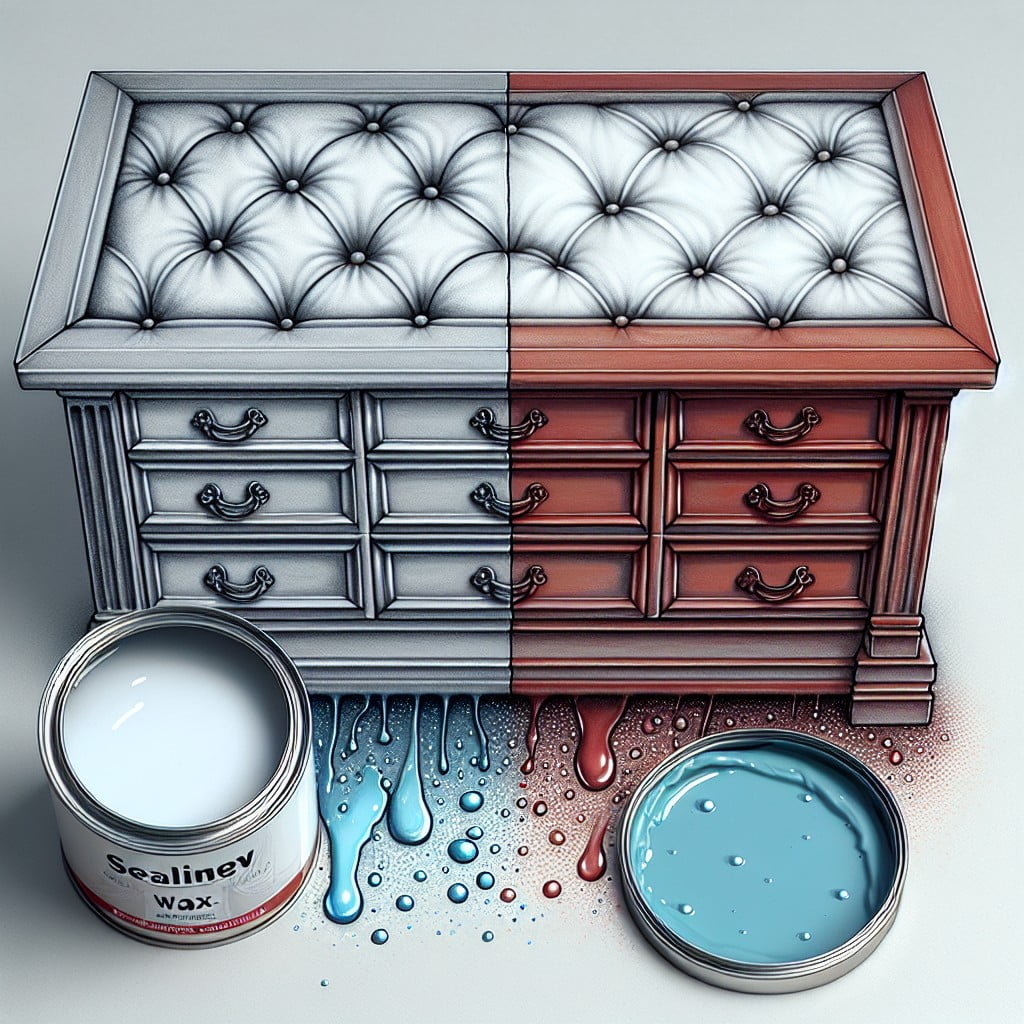
Sealing chalk paint is a critical step in ensuring that your painted surfaces can withstand exposure to water and everyday wear and tear. Here are a few points to guide you in this process:
1. Choose the right sealer: Wax, polyurethane, and polycrylic are popular choices. Each offers different levels of protection and aesthetics, so select one that aligns with your project’s needs.
2. Application technique matters: For wax, apply with a cloth or brush in a circular motion, building up thin layers. With polyurethane or polycrylic, use a brush or a foam applicator for even coverage, and always go with the grain.
3. Curing time is essential: After sealing, give ample time for the product to cure fully. Rushing this can compromise the paint’s durability, so patience pays off.
4. Reapply if necessary: Depending on usage, the sealant may wear over time. Periodic reapplication can rejuvenate the water resistance and keep the surface looking fresh.
Remember, a properly sealed chalk painted surface will greatly increase its longevity and allow you to enjoy your beautifully transformed pieces with peace of mind.
Factors Influencing Chalk Paint’s Reaction to Water
Several variables impact the response of chalk paint to water:
1. Cure Time: Chalk paint needs to cure fully, which typically takes about 30 days. Before this period, water can easily affect its finish.
2. Surface Preparation: Prior to painting, thorough cleaning and possibly sanding ensure better paint adherence, reducing vulnerability to water.
3. Number of Coats: Multiple layers of chalk paint can form a more formidable barrier against moisture compared to a single coat.
4. Quality of Paint: High-quality chalk paints may have better intrinsic resistance to water and less tendency to wash off or streak.
5. Application Technique: A smooth, well-applied coat is less susceptible to water damage than a streaky or uneven one.
Understanding these factors is crucial in managing expectations and ensuring the longevity of your chalk paint project under conditions where it may come into contact with water.
Stripping Chalk Paint With Bio Strip
When opting to remove chalk paint, Bio Strip is a user-friendly choice that efficiently strips the paint without harsh fumes or chemicals. Made from biodegradable ingredients, this water-based stripper adheres well to the eco-conscious trends in home renovation.
To use Bio Strip effectively:
- Apply a generous layer directly onto the chalk paint surface and leave it to work its magic. Usually, this takes about 15 to 30 minutes, but the duration may vary based on the thickness and age of the paint.
- Observe the paint beginning to bubble or blister; this indicates that the stripping agent is penetrating and lifting the paint.
- Once the paint is loosened, gently scrape it away with a plastic scraper. This tool helps to avoid damaging the underlying surface.
- For any stubborn areas, a second application of Bio Strip might be necessary. Remember, patience here is key to preserving the integrity of your furniture or walls.
- After removing the paint, wipe down the surface using a cloth dampened with water to neutralize the area and remove any remaining residue.
Keep in mind that proper ventilation is still important even with non-toxic products, and wearing protective gloves can prevent skin irritation.
Can You Paint Over Chalk Paint Instead of Removing It?
Certainly, there is a straightforward option to update surfaces without stripping existing chalk paint layers: applying a fresh coat of paint. Chalk paint adheres well, providing a good base for both similar paints and others. For best results, consider these points:
- Surface Preparation: Lightly sand the surface to remove any loose paint and to create a slightly rough texture for better adhesion.
- Cleanliness: Ensure the surface is free of dust and grease. Wipe down with a damp cloth and allow it to dry completely before repainting.
- Paint Choice: While most paints can go over chalk paint, using another water-based paint is often easiest. Oil-based paints may require a primer.
- Application Method: Apply paint using a brush or roller, starting with a thin layer and allowing it to dry thoroughly before adding a second coat if necessary.
- Curing Time: Give the new paint time to cure fully, often a few days, to achieve maximum durability and finish quality.
Following these steps can revitalize your chalk-painted furniture or walls without the need for removal, streamlining the update process.
Procedures for Cleaning Water-Spilled Chalk Painted Furniture
In the event of water spills on chalk-painted furniture, quick action is crucial to prevent water damage. Begin by blotting the spill with a soft, absorbent cloth, avoiding rubbing which can disturb the paint’s finish.
If the spill is substantial or has been left to sit, slightly dampen a cloth and gently dab the area to clean without saturating the paint. For minor water stains, a mixture of mild soap and water can assist in removal.
Dry the area thoroughly with a soft towel after cleaning. For recurring issues or heavy-duty cleaning, a vinegar and water solution may be effective. Remember to spot test any cleaning solution in an inconspicuous area first to ensure it doesn’t affect the painted finish.
Regular maintenance includes dusting and occasional wiping with a dry cloth to keep the surface in optimal condition.
Tips for Removing Scuff Marks From Chalk Painted Furniture
To effectively remove scuff marks from chalk-painted furniture, gentle cleaning methods are key to preserving the finish while restoring the piece’s aesthetic.
– Use a damp, lint-free cloth to wipe the affected area lightly; the slight moisture can help lift the dirt without compromising the paint’s integrity.
– For more stubborn marks, mix a small amount of mild soap with water and dip your cloth in the solution. Ensure you wring out excess liquid to avoid water damage.
– If soap and water are insufficient, consider a fine-grit sanding sponge. Lightly buff the scuff mark in a circular motion to avoid creating noticeable patches.
In all cases, follow up with a clean, dry cloth to remove any leftover moisture or residue, ensuring that the surface is as dry to touch as possible to prevent any potential water damage.
Maintaining Chalk Painted Furniture to Prevent Water Damage
To ensure the longevity of your chalk-painted furniture and safeguard it from potential water damage, regular maintenance is key.
Here are some simple but effective strategies:
- Apply a sealer: Enhance water resistance with a layer of wax or a water-based polyurethane sealer. Follow manufacturer guidelines for the best results.
- Routine dusting: Use a soft cloth to dust the surface regularly, preventing buildup that can trap moisture.
- Immediate spill cleanup: If accidents happen, wipe up any water or spills promptly with a dry, absorbent cloth to prevent water marks.
- Avoid excessive moisture: Keep furniture away from damp areas and direct contact with water. Using coasters can protect surfaces from drink spills and condensation.
- Refresh seals: Periodically check and reapply sealant as needed, especially on high-use surfaces, to maintain protection.
By adopting these practices, you’ll preserve the pristine appearance of your chalk-painted furniture, minimizing the risk of water damage and extending its life.
Why Chalk Paint Might Be a Suitable Choice for Your Project
Chalk paint offers an array of advantages that may cater to your project’s needs perfectly:
- Versatility: Adheres to a wide range of surfaces without prior sanding or priming, making it ideal for upcycling furniture or refreshing cabinets.
- Matte Finish: Provides a unique, velvety matte finish that can give pieces a vintage or shabby chic look.
- Blendability: The thick consistency is great for blending and creating ombre or distressed effects.
- Drying Time: It dries quickly, allowing you to complete projects faster and apply multiple coats in a single day.
- Eco-Friendly: Generally low in volatile organic compounds (VOCs), making it a more environmentally friendly option.
- Ease of Distress: It is easily sanded post-drying for a distressed appearance or to achieve a smoother finish.
- Customization: Easily mixed with other colors which enables endless options for custom shades and artistic touches.
These qualities make chalk paint a highly desirable choice for creative DIY projects, especially where a vintage flair is sought.
Methods to Safeguard Chalk Painted Furniture From Accidental Spills
To protect your chalk-painted furniture from accidental spills, consider these practical steps:
- Apply a sealant: After your chalk paint has dried, apply a clear sealant such as wax, polyurethane, or polycrylic. These products create a protective layer that repels water and makes the surface easier to clean.
- Use coasters and placemats: Prevent direct contact with liquids by using coasters under beverages and placemats under dishes. This not only guards against spills but also prevents water rings and heat damage.
- Employ table runners and cloths: An additional layer of fabric can safeguard the entire surface of a piece from spills during use.
- Opt for spill-proof covers: In high-traffic areas or if you have young children, consider spill-proof or waterproof covers that can be draped over furniture and then removed and washed as needed.
Remember, while these methods can help prevent water damage, they are not foolproof. Regular checks and quick cleanups of any spills will go a long way in keeping your chalk-painted furniture in top condition.
FAQ
Will chalk paint come off if it gets wet?
Yes, chalk paint will wash away or deteriorate if it is not adequately dried before being exposed to water.
Can chalk paint be removed easily?
Yes, chalk paint can be removed easily, primarily through a process of sanding.
Does chalk paint wipe off?
Chalk paint does not wipe off under normal conditions; however, it can potentially be removed with the use of harsh products and tools, as well as liquids and spray polishes.
Will chalk paint wash off in the rain?
Chalk paint, if not sufficiently dried, will indeed wash off when exposed to rain.
How does humidity affect the durability of chalk paint?
Humidity affects the durability of chalk paint by increasing its drying time and potentially causing it to blister or peel.
Can chalk paint be effectively sealed to prevent water damage?
Yes, chalk paint can be effectively sealed to prevent water damage by applying a layer of wax or varnish.
Does the type of surface impact how easily chalk paint can be washed off?
Yes, the type of surface significantly impacts the ease with which chalk paint can be washed off.
Recap:




